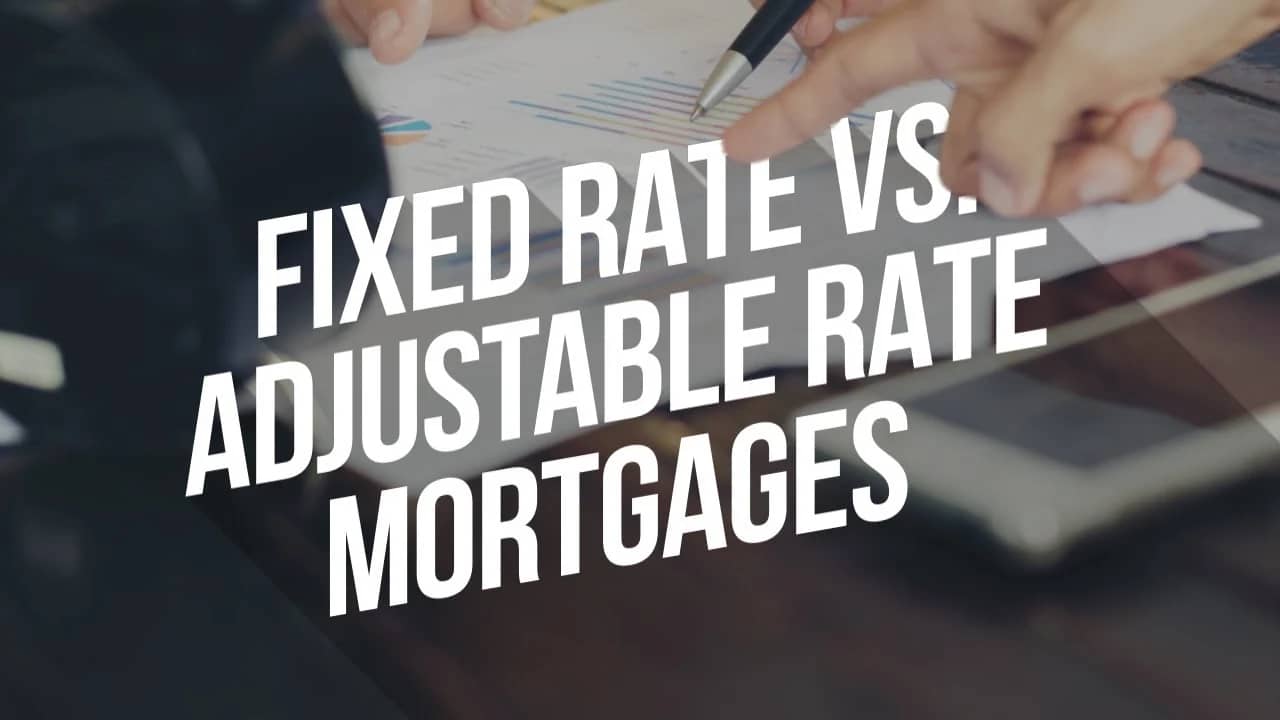Fixed Rate Mortgages vs Adjustable Rate Mortgages (ARM)
When it comes to mortgages, you’ve likely heard the terms fixed-rate and adjustable-rate (ARM) thrown around. But what do they really mean, and how do they impact your home loan in 2025? Let’s break it down.
Fixed-Rate Mortgages: Stability and Predictability
A fixed-rate mortgage is exactly what it sounds like: the interest rate on your loan remains the same for the entire life of the loan. Whether you choose a 15-year, 30-year, or even a custom term like a 21- or 22-year mortgage, your rate stays constant. This means your monthly payments are predictable, making it easier to budget over the long term.
For example, if you secure a 30-year fixed-rate mortgage at 5.5% in 2025, that rate will stay at 5.5% for the entire 30 years, regardless of how the broader interest rate environment changes. This stability is especially valuable in uncertain economic times, as it shields you from potential rate hikes.
Adjustable-Rate Mortgages (ARMs): Flexibility with Risk
An adjustable-rate mortgage (ARM) comes with a rate that can change over time. ARMs typically start with a fixed rate for an initial period—often 3, 5, or 7 years—before the rate begins to adjust at regular intervals.
For instance, if you have a 5-year ARM in 2025, your rate might be fixed for the first five years. After that, it could adjust annually based on market conditions. The adjustment is usually tied to a financial index, and there’s typically a cap on how much the rate can increase at each adjustment period and over the life of the loan.
However, it’s important to note that not all ARMs are created equal. In the past, some loans lacked clear caps, leading to significant financial strain for borrowers during periods of rising rates (think 2008-2009). Today, most ARMs have built-in safeguards to limit how high your rate can go, but it’s still crucial to understand the terms of your loan.
Fixed vs. ARM in 2025: Which Is Better?
The answer depends on your financial situation, goals, and risk tolerance.
- Fixed-Rate Mortgages are ideal if you value stability and plan to stay in your home for the long term. You’ll know exactly what your payments will be, which can be a huge relief if interest rates rise in the future.
- Adjustable-Rate Mortgages can be appealing if you plan to sell or refinance before the initial fixed period ends. Historically, ARMs have offered lower initial rates compared to fixed-rate mortgages, making them attractive for short-term homeowners. However, this isn’t always the case.
In 2025, we’re seeing a shift in the mortgage market. After several years of an inverted yield curve (where short-term rates were higher than long-term rates), the curve is beginning to normalize. This means ARMs are starting to offer lower initial rates compared to fixed-rate mortgages again. For example, a 5/1 ARM in 2025 might start at 5.0%, while a 30-year fixed-rate mortgage could be at 5.75%.
When Might an ARM Make Sense in 2025?
While fixed-rate mortgages are often the safer choice, there are scenarios where an ARM could work in your favor:
- Short-Term Ownership: If you plan to sell or pay off your mortgage within the initial fixed period of an ARM, you could benefit from a lower rate without worrying about future adjustments.
- Aggressive Payoff Plans: If you’re committed to paying off your mortgage quickly, an ARM’s lower initial rate could save you money compared to a fixed-rate loan.
- Market Shifts: With the yield curve normalizing in 2025, ARMs are becoming more competitive again, offering lower initial rates than fixed-rate mortgages.
That said, ARMs come with risks. If your financial situation changes or rates rise significantly after the initial fixed period, your payments could increase, potentially straining your budget.
Fixed-rate and adjustable-rate mortgage
Choosing between a fixed-rate and adjustable-rate mortgage in 2025 is a big decision. Fixed-rate loans offer stability and peace of mind, while ARMs can provide short-term savings for the right borrower.
As of 2025, the mortgage market is shifting, and ARMs are becoming more attractive as the yield curve normalizes. However, fixed-rate mortgages remain a solid choice for those who value long-term predictability. The key is to work with a trusted lender who can help you navigate the options and choose the loan that best fits your needs.
Whether you’re a first-time homebuyer or a seasoned homeowner, understanding the difference between fixed-rate and adjustable-rate mortgages is essential to making an informed decision. If you have questions or need guidance, don’t hesitate to reach out to a mortgage professional who can help you weigh the pros and cons.
Take care, and happy house hunting!
Subscribe to our newsletter!
- Mortgage Strategy 2025: Navigating the Future of Real EstateThe real estate market is constantly evolving, and as we look ahead to 2025, it’s clear that both homeowners and investors need a solid mortgage strategy to navigate the challenges and opportunities ahead.
- How a Mortgage Actually WorksThe world of real estate can feel overwhelming, especially if you’re new to it. With so many terms and concepts to grasp, buying a home might seem like a daunting
- How to Get Out of a MortgageIf you’re feeling stuck in your mortgage or simply exploring your options, you’re not alone. Many homeowners in the United States and United Kingdom find themselves wondering how to get out of a mortgage.
- How to Qualify for a Mortgage with Student Loan Debt in 2025Buying a home is a significant milestone, but for millions of Americans carrying student loan debt, the path to homeownership can feel daunting. The good news? Qualifying for a mortgage
- Mortgage Rates UpdateHey everyone, Dan Freo here with your Closing Bell update for February 14th, 2025. Today, we’re diving into the national deficit, mortgage rates, bond market reactions, and equity movements. But
